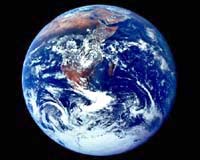
 |
To many here, the majesty of the view is one of the highlights of their stay.
But for visitors to the city in the past two weeks, the only way to appreciate it has been on postcards or old photos.
A thick cloud of choking smog has hung in the air for days, obscuring the city's most famous tourist attraction -- its multi-billion dollar gravity-defying skyline.
The filthy cocktail of noxious gases has prompted repeated government health warnings; smog-reduced visibility has caused multiple marine collisions; and the stench in the air has prevented many from leaving their homes.
And what is worse, these bad-air days are not unusual. The government registered 53 last year during which the haze was so bad that health chiefs warned people with respiratory or heart complaints to stay indoors.
Hong Kong is choking to death in the smog: The local branch of environmental group Friends of the Earth estimates the city suffers 2,000 more deaths per year than it would if the air was clean.
"This is not something that is going to go away any time soon because as far as we can see, nothing is being done about it," said Chu Hong-keung, a spokesman for the group told AFP.
Some 250,000 tonnes of pollutants are pumped into Hong Kong's air each year and 90 percent originate from the heavily industrialised Pearl River Delta Region in neighbouring China.
Hong Kong authorities have repeatedly promised to raise the issue with their Chinese counterparts but all to no avail so far.
A study by the Chinese University in Hong Kong found that incidence of childhood asthma, a common symptom of high pollutant levels, more than doubled from 4.8 to 11.2 percent of children between 1989 and 1995.
"Asthma is the predominant respiratory problem that Hong Kong suffers as a result of pollution," said Dr David Owens, a senior partner at the Owens, Trodd and Partners surgeries in the city.
But many other problems flow from the smog in the air.
The reason is simple. The lungs are like the body's fuel tanks, filled with billions of tiny pockets enclosed by permeable membranes that capture life-giving oxygen from the air we breathe. If that air happens to contain poisonous gases then toxins go into the bloodstream with potentially fatal effects.
Dr Wong Chit-ming, professor of community health at the university explained that the smog in Hong Kong contains a variety of dangerous gases that attack the respiratory system.
"At any one time there are literally hundreds of compounds in the air that are potentially lethal to us," Wong said.
Ozone is one. Produced by the reaction between sunlight and pollutants like nitrogen oxide and sulphur dioxide, ozone has a deadening effect on the protective cells that line the lung's membranes making oxygen absorption difficult.
According to Clear the Air, a local green group, ozone levels here have risen almost 80 percent in the past 10 years.
And the sulphur dioxide is not just bad as a producer of ozone. "Sulphur is an acid and it corrodes lungs," said Wong. "It literally scalds and scars the lung tissue and reduces your ability to absorb oxygen."
Happily, the levels of sulphur dioxide in the air had dropped in the 1990s after China made an effort to close down or clean up its old power plants. But in recent months it has risen again after Bejing reopened old power plants, mothballed because of their poor emissions standards, to meet its growing needs for power.
Power plants, though, are not the only cause of the problem. Vehicle exhaust fumes, which account for about a fifth of all Hong Kong's air pollution, are light, pass easily through to the lungs, and are deadly.
The most dangerous of these gases is carbon monoxide, a colourless, odourless poison that the lungs find easier to absorb than oxygen.
"Instead of oxygen, the blood carries this poison to the organs," said Wong. "The result is oxygen starvation and major damage to the organs, especially the brain, which basically die."
Although particulate pollution like soot rarely gets as far as the lungs, Wong warns that when it does, the effects can be fatal.
Chief among the contaminants are heavy metals and ironically they are made dangerous by oxygen.
Oxygen is a poison that would destroy organ tissue -- in a corrosive process similar to rusting -- unless there were chemical checks within our bodies to tame it.
Many heavy metals, especially iron compounds commonly found in industrial waste, upset that balance and lead to degenerative diseases as the organs' cells effectively age quicker.
Other heavy metals like arsenic, cadmium and nickel, can also cause cancer by attacking and damaging DNA, the chemical coding in every cell that tells it how to grow and develop.
TERRA.WIRE |